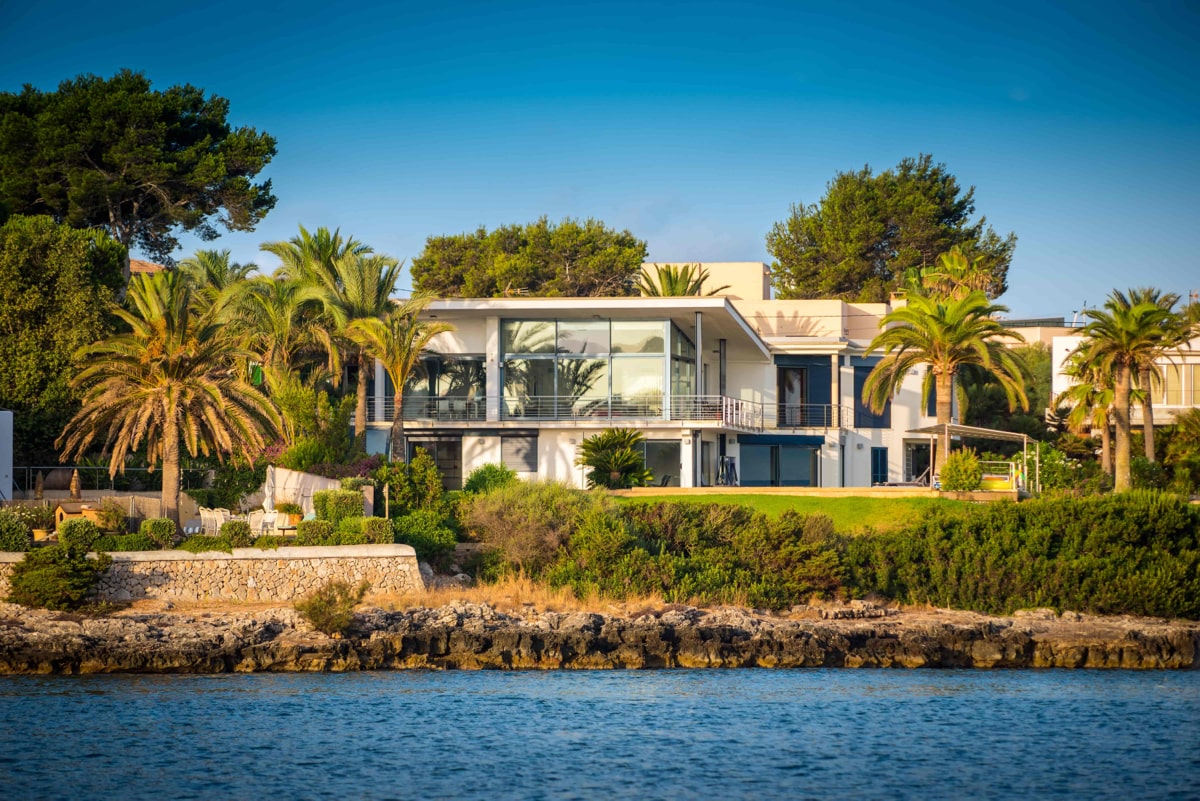In Europe’s fast-moving prime property markets, time is often the difference between winning or losing a dream home or key investment. For high-net-worth individuals, bridging finance offers a way to move with confidence, securing opportunities while their capital is tied up elsewhere or their existing property remains unsold.
As our International Mortgage Broker, Sam Dore, comments:
“Bridging finance in Europe is often the only viable way to secure a high-value property quickly, especially when traditional lending timelines can’t keep pace with competitive markets. Our international clients value speed, flexibility, and the ability to structure cross-border finance seamlessly.”
The primary use of bridging finance we see in Europe is high-net-worth clients looking to put an offer in on a new property before their current one has sold.
This could be clients purchasing a villa in Èze whilst their chalet in Courchevel is on the market, or perhaps they will be keeping both but need to make an offer quickly to avoid losing a property to a higher bidder. Oftentimes, clients cannot afford to spend the extra time a traditional mortgage would take to set up so will use a bridging loan initially before refinancing onto a long term mortgage.
Get in the Know
Subscribe to our newsletter
What Clients Use Bridging Finance in Europe?
Bridging finance is most commonly used by:
- Developers who have completed a new project and need to finance away from their private funder or development loan. They will use a bridge against the property until they sell.
- Clients expecting a large liquidity event within a year (sale of a business, investments, etc) but need the cash to purchase their dream property quickly.
The Lenders Behind High-Value European Property Deals
The lenders we work with across Europe specialise in bridging finance for high-value single residential assets, that is, the asset class that clients will have the most options for terms and financing in Europe. Most lenders have a minimum loan amount of €1m and a maximum of 65% LTV, the exception being with development lending, where we see higher LTV, especially in Spain.
How Company Structures Enable Flexible Lending in Europe
Because bridging finance is often unregulated in Europe (ESMA overview), lenders require that properties be held within company structures. The role of structures is crucial in bridging finance, for all lenders across Europe. The exact type of structure will depend on the country as well as the lender. It is important to note that there are very few lenders who can lend directly to a French SCI. For example, a Monaco-based client purchasing in the South of France may initially hold their asset through an SCI, which many lenders can’t lend directly to. In these cases, we help establish a UK, Luxembourg or Jersey Topco. This is because bridging finance is rarely regulated in Europe, which allows for flexible terms but also means that lenders cannot use property held in a personal name or a client’s primary residence as collateral.
Financing for Growth: Bridging Loans for Development & Refurbishment
We can assist with bridging for development in Europe and can source very competitive rates with flexible terms, allowing developers to add full value to their properties. Lenders will require complete business plans, building permits in place and a schedule of works as well as build costs, and throughout the loan term. The client will need to demonstrate where and how funds have been allocated. Moreover, lenders can provide up to 75% loan to cost or 55% LTGDV. Some bridge lenders are more catered towards refurbishment only (no planning required) whereas some can assist with heavy development including ground up, change of use, and changing of building footprint.
Real Rates, Real Terms: What to Expect from European Bridging Finance
While rates and terms vary by lender and region, private and non-bank lenders in Europe tend to be more competitive on speed and flexibility than traditional institutions, particularly when working with experienced brokers who can present well-structured deals. The Rates and terms available depend on many factors, including the property location, borrower situation, LTV and loan size.
Example structure would be:
- 2% arrangement fee
- 1% per month interest rate
- 1% exit fee
- 60% LTV maximum
The 12-month term, 3-month minimum interest payment, then no early repayment charges
In most cases, the interest and some fees can be retained in the loan and deducted from the day-one financing amount, which means there would be no monthly payments, just a balloon payment at the end of the term.
High-Value Case Studies
Case Study 1: Large Super Prime Swiss Chalet
- Property Value: Above €20m
- Loan Amount: 65% LTV Gross
This client approached Enness as their latest investment property had reached the end of term with their current private lender, who funded the renovation of the property. Thus, they urgently needed to refinance before eventually moving to a long-term loan with a well-known private bank.
Enness moved quickly and presented terms to the client that included the higher-than-average LTV, that the client required to repay their current lender in full. This lender could move quickly and, working together with Enness, got terms in front of the client within 24 hours, with completion within 4 weeks.
Case Study 2: Low LTV Bridge for a Prime Property in France
- Property Value: Above €15m
- Loan Amount: Circa €2.5m
This client was selling their large villa in a prime location in France and purchasing a new property in Switzerland. They had most of the capital saved; however, they needed a top-up of around €2.5m for the new purchase before their current property sold.
Enness secured competitive terms and put them in touch with advisors who could instruct them on the best structure for the property, as it was held in a French SCI and would need a new Topco structure.
With such a beautiful property and a very low LTV, the client had a good range of lenders who were enthusiastic about this case, gave terms quickly and were very open to negotiation on pricing to secure the deal.
Speak to Our Experts About European Bridging Finance
Working across jurisdictions introduces added complexity, from legal structuring and tax treatment to varying lending regulations. Enness has deep experience securing bridging loans across France, Spain, Switzerland, Monaco, and other key markets, tailoring every deal to local requirements while managing the process from end to end. If you’re considering a property purchase in Europe and would like to explore how bridging finance can work for you, contact our team to discuss your options.
The views and opinions expressed in this piece are those of the author and do not constitute advice or a recommendation. They do not necessarily reflect the official policy or position of Enness and are not intended to indicate any market or industry viewpoints, or those of other industry professionals.





